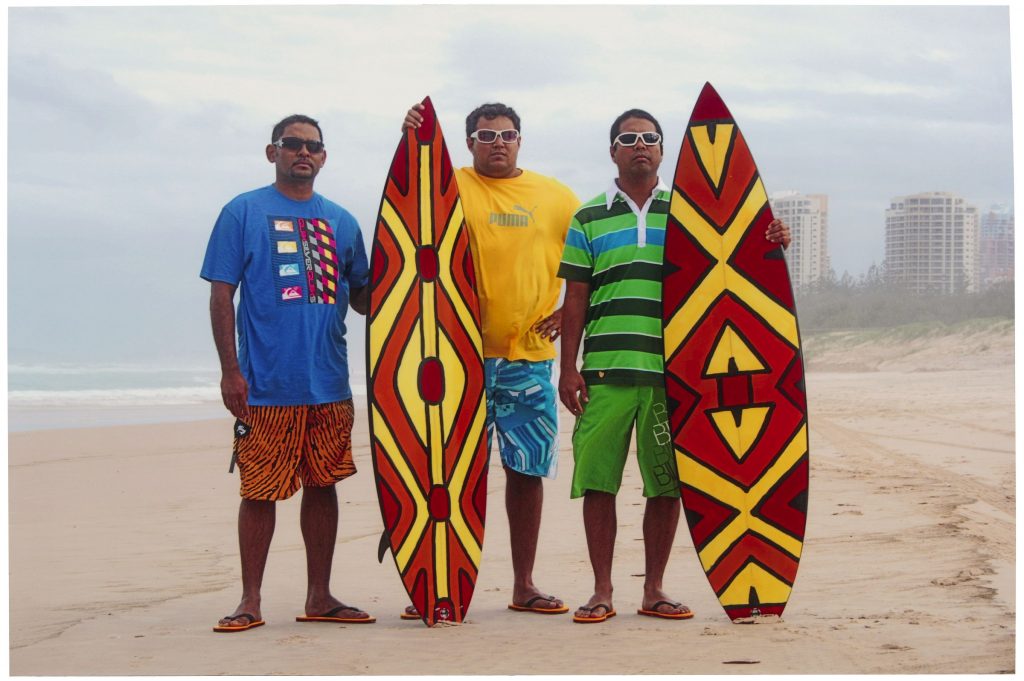
Vernon Ah Kee – ‘Can’t chant (wegrewhere) #2’ 2009 – Photograph – National Gallery of Australia Collection © The Artist
Body Language reveals the central role language plays in expressing cultural identity. Featuring work by almost 30 Aboriginal and Torres Strait Islander artists, this exhibition shows how Indigenous art—particularly body art—can be interpreted as a visual language through its use of symbols.
Body Language explores the identity of Australia’s diverse Aboriginal and Torres Strait Islander people and communities. Through story, dance, song, kinship, carvings, painting and markings on bodies and objects, it seeks to highlight the rich complexity of Australia’s Indigenous cultural expression.
For Aboriginal and Torres Strait Islander people language is fundamental to the expression of culture and identity. Language is embedded in Indigenous oral traditions and in patterns and designs, as means of keeping stories alive through the generations.
Body Language showcases a diverse range of mediums that convey the ways in which Indigenous Australians communicate. As highlighted in the works on display, symbols record and retain important information. Combined in different ways they communicate stories or directions to those who can read them.
The exhibition includes artists widely dispersed throughout Australia and shows that language—both verbal and visual—is key to identity. Body Language features bilingual written material supporting the works that was produced in consultation with the artists and their communities.
SOURCE: National Gallery of Australia